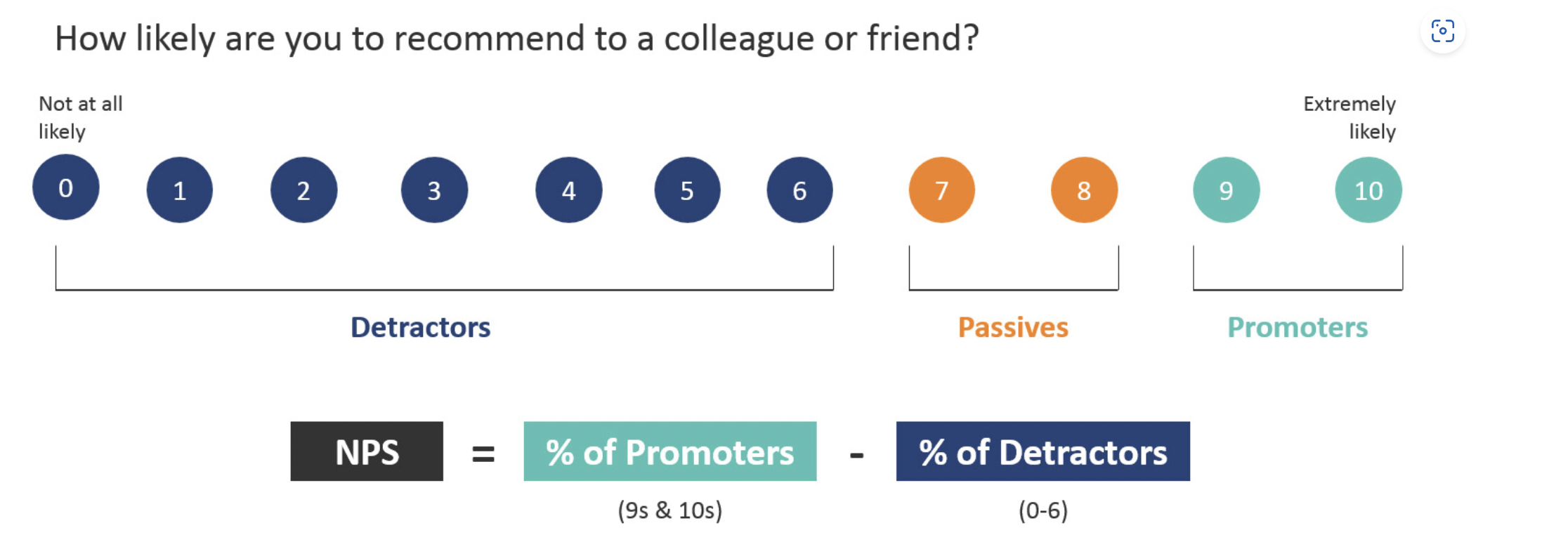Today I learned about NPS
 Nitin Kalra
Nitin Kalra
Different abbreviations have completely different meanings in various contexts.
NPS can refer to the National Pension Scheme or Net Promoter Score.
In this article, we will focus on the Net Promoter Score. However, if you are not familiar with the National Pension Scheme, you should definitely check it out, as it can help you save on taxes.
NPS
Net Promoter Score, and it is a widely used metric in customer support and customer experience management. The Net Promoter Score is used to measure the loyalty of customers to a company or brand and their willingness to recommend it to others.
Have you ever seen this kind of image, in a feedback form

If yes, you have filled a form that was used to calculate NPS (Net Promoter Score), a score used to predict how many users are loyal to the brand, and will promote the brand.
Here's how the NPS system works:
Survey: Customers are asked a simple question: "On a scale of 0 to 10, how likely are you to recommend our product/service/company to a friend or colleague?"
Scoring: Based on their responses, customers are divided into three groups:
Promoters (score 9-10): These are highly satisfied customers who are likely to recommend the company to others. They are considered loyal and enthusiastic about the brand.
Passives (score 7-8): These customers are satisfied but not as enthusiastic as promoters. They are considered somewhat neutral and less likely to actively promote the company.
Detractors (score 0-6): These are dissatisfied customers who are unlikely to recommend the company and may even share negative experiences with others.
Calculation: The Net Promoter Score is calculated by subtracting the percentage of detractors from the percentage of promoters.
The score can range from -100 to +100.
The formula for calculating NPS is: NPS = % Promoters - % Detractors

A high positive NPS indicates that a company has more promoters than detractors, which is a positive sign for the company's growth and customer loyalty. On the other hand, a negative NPS suggests that there are more dissatisfied customers than satisfied ones, indicating areas of improvement in the customer experience and support.
The NPS is a valuable tool for companies to gauge customer satisfaction and loyalty over time. By regularly measuring NPS and understanding the feedback from promoters and detractors, companies can identify areas of strength and weakness and take necessary actions to enhance their products, services, and overall customer support.
To get a better sense of what is considered a good NPS for a particular business, it's essential to compare it against industry benchmarks and track the NPS over time to see trends and improvements.
If you liked this blog, you can follow me on twitter, and learn something new with me.
Subscribe to my newsletter
Read articles from Nitin Kalra directly inside your inbox. Subscribe to the newsletter, and don't miss out.
Written by

Nitin Kalra
Nitin Kalra
Working as a Principal Software Engineer. I have experience working on Java, Spring Boot, Go, Android Framework, OS, Shell scripting, and AWS. Experienced in creating scalable and highly available systems.